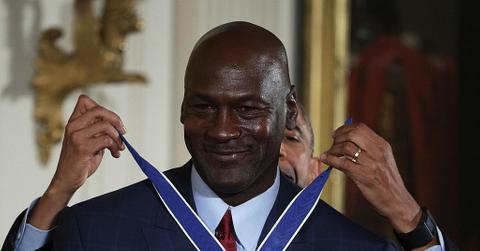
The Jordan Empire: How Michael Built a Billion-Dollar Brand
Explore the journey of Michael Jordan's brand evolution, from the iconic Air Jordan 1s to a business empire valued by Forbes. Discover the strategy behind the success.
By Michael SpearsSept. 20 2023, Updated 9:50 p.m. ET
Michael Jordan is a legend and a symbol of pop culture that has remained influential for nearly four decades. His dribbling, mid-range jumper, and crazy athleticism have made him a global icon, so how does a man with a basketball become more than a man? How do the initials of a kid raised in Wilmington, North Carolina become synonymous with a love for sport and the billion-dollar Jumpman brand?
The answer lies on his feet. Air Jordan sneakers are more than just shoes; they’re a mid-90s movement in style and swagger that transcended the game of basketball to become a fashion staple reshaping the sneaker industry. At the center of this branding is a ruthless competitiveness; the desire to be the best at whatever you do; a mindset that stretches from athletics to entrepreneurship.
As MJ said, "Obstacles don’t have to stop you. If you run into a wall, don’t turn around and give up. Figure out how to climb it, go through it, or work around it." In MJ’s eyes, there are no problems too large to navigate. You can get cut from your high school basketball team and still go on to become the best player of all time.
Michael Jordan’s First Sneaker Deal Was Worth $2.5 Million
Michael’s first sneaker deal with Nike promised $2.5 million over a five year spa — a contract inconceivable to players of the time. Most NBA players were lucky to get a shoe deal. The belief was that players should consider themselves lucky to get to represent sneaker brands. Michael (and his mother) knew their worth. Nike sold $70 million worth of his signature Air Jordan 1s in the first two months of sale alone — a number exacerbated by the story surrounding the release.
The Air Jordan 1s were initially “Banned.” League rules at the time of the release stated that shoes had to be at least 51% white, and the “Bred 1s” were predominantly red and black. When the shoes were released and sold out, Nike restocked and restocked until they were overstocked and the price dropped.
They couldn’t control the price of a shoe they didn’t understand the value of.
Nike Started “Re-Releasing Colorways in 1994 — Changing the Sneaker Game
It was only when Nike decided to start “re-releasing” colorways in 1994 that Air Jordans saw their true value. Nike would re-release colorways after Jordan’s retirement (and return, and retirement again) marketing the Jordan brand as exclusive grabs in 2001, 2003, 2004, and 2007 when they attached the famous Jumpman logo to the canvas of the shoe. In the same manner as, “If at first you don’t succeed, try try again,” these shoe reveals were a type of brand perseverance.
Today, Michael is worth an estimated $3 billion, according to Forbes, and his brand is a big part of his success.

